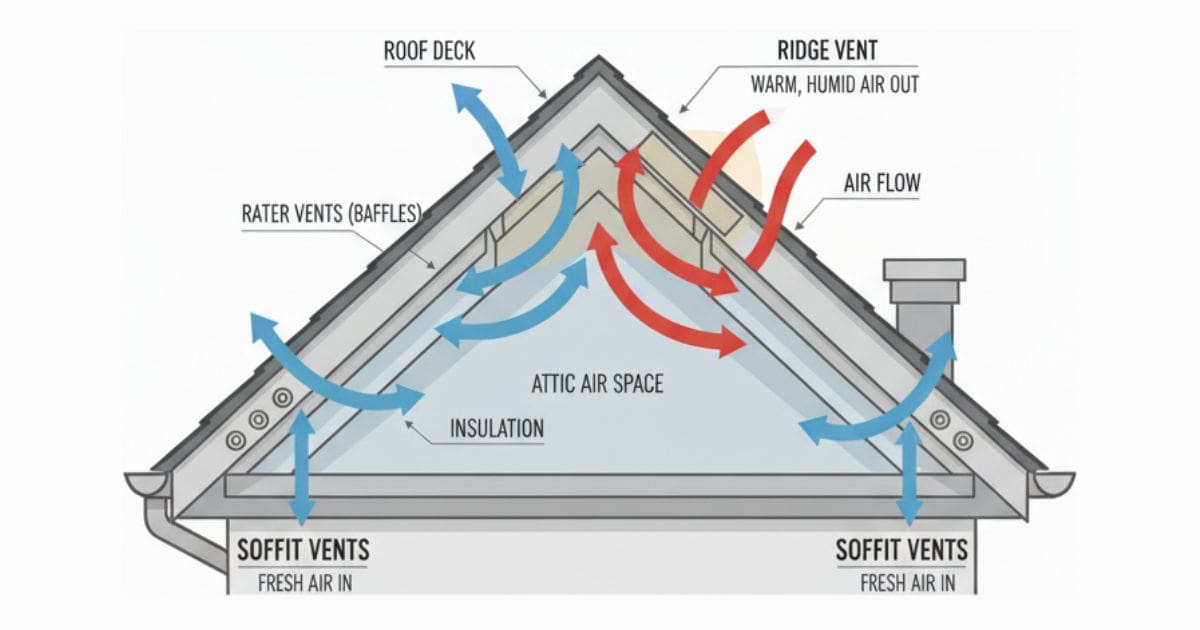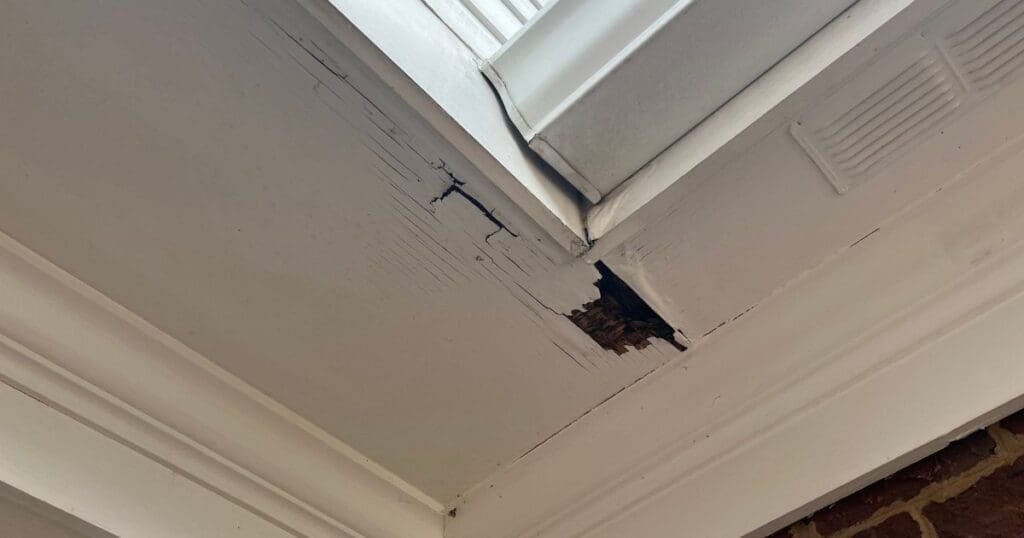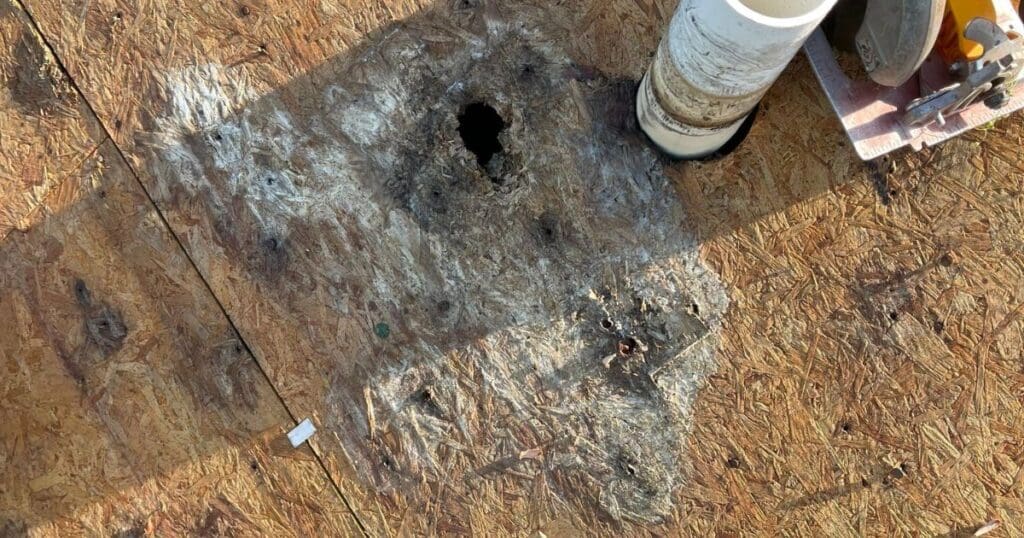A Homeowner's Guide to Soffit Repair
When it comes to home maintenance, the roof is often a top priority. But what about the less-obvious components, like the soffit? Though it may not be the star of the show, the soffit plays a crucial role in protecting your home from the elements and keeping it looking its best.
This guide will walk you through everything you need to know about your home’s soffit, from what it is to when you should call in the professionals for a repair.
What is a Soffit and What Does It Do?

The soffit is the flat board that runs along the underside of your roof’s overhang. If you stand next to your house and look up at the edge of the roof, you’ll see it. The soffit’s primary job is to provide ventilation to your attic. The small vents in the soffit allow air to circulate, which helps to regulate the temperature and moisture levels in your attic. This is especially important in the summer, when a well-ventilated attic can help to keep your home cooler and reduce your energy bills. In the winter, proper ventilation prevents moisture from building up and causing problems like mold and ice dams.
Beyond its functional role, the soffit also provides a finished look to your home’s exterior, hiding the rafters and giving your roofline a clean, polished appearance. It also acts as a barrier, keeping pests like squirrels, birds, and insects from making a home in your attic.
Common Soffit Problems and What Causes Them
Like any part of your home’s exterior, the soffit is susceptible to wear and tear. Here are some of the most common problems you might encounter:
- Peeling or Flaking Paint: This is often the first sign of a problem. The paint on your soffit acts as a protective barrier against moisture. When it starts to peel or flake, it exposes the underlying wood to the elements, which can lead to more serious issues.
- Rot or Decay: If you notice that the wood on your soffit is soft, spongy, or sounds hollow when you tap on it, you’re likely dealing with rot. This is a serious problem that can compromise the structural integrity of your roof if left unaddressed. Rot is typically caused by prolonged exposure to moisture, often from clogged gutters that overflow and saturate the wood.
- Water Stains or Leaks: Discoloration or watermarks on your soffit are a clear indication of a water problem. This could be due to clogged gutters, a leak in the roof, or damaged flashing that is allowing water to seep in.
- Pest Infestations: If you’ve noticed an increase in pest activity around your roofline, your soffit may be to blame. Pests are drawn to the dark, sheltered space of an attic, and a damaged soffit can provide them with an easy entry point.
- Sagging or Warped Boards: A sagging or warped soffit is a sign of a more significant problem. It could be caused by moisture buildup that has weakened the wood, or it could indicate that the soffit is not properly supported.
- Poor Attic Ventilation: If your attic is excessively hot or humid, it’s a good idea to check your soffit vents. They can become clogged with debris, insulation, or even pests’ nests, which can restrict airflow and lead to a host of problems.


DIY or Professional Repair?
Some soffit issues can be tackled by a handy homeowner, while others are best left to the professionals.
DIY-Friendly Repairs:
- Minor Paint Issues: If the wood is still solid, you can sand and repaint small areas of peeling paint.
- Clearing Vents: Removing debris from your soffit vents is a simple task that can be done with a brush or a leaf blower.
- Caulking Small Gaps: Sealing small cracks with a quality exterior caulk can help to prevent water and pests from getting in.
- Extensive Rot or Decay: If you’re dealing with rotted wood, it’s important to have a professional assess the extent of the damage and replace the affected sections.
- Large Sections of Peeling Paint: This could be a sign of a larger moisture problem that needs to be addressed by a professional.
- Pest Infestations: While you can seal up entry points, a professional will be able to determine the extent of the damage and a pest control expert may be needed to handle the infestation.
- Sagging or Warped Boards: This is a sign of a more serious structural issue that requires the expertise of a professional.
- Gutter Issues: If your soffit problems are being caused by faulty gutters, it’s best to have a professional address both issues at the same time to ensure a proper and lasting repair.
The Consequences of Neglecting Soffit Issues

It can be tempting to put off soffit repairs, but doing so can lead to a host of more serious and expensive problems down the road.
- Structural Damage: Rot and moisture can spread from the soffit to the rafters and the rest of the roof structure, leading to costly and extensive repairs.
- Mold and Mildew: Poor ventilation can create a damp environment in your attic, which is the perfect breeding ground for mold and mildew. This can cause health problems and be difficult and expensive to remediate.
- Higher Energy Bills: An improperly ventilated attic can cause your heating and cooling systems to work harder, leading to higher energy bills.
- Pest Infestations: A damaged soffit is an open invitation for pests, which can cause further damage to your home and be a nuisance to deal with.
- Decreased Curb Appeal: A damaged soffit can make your home look unkempt and decrease its value.
What To Do About Soffits
Ultimately, a healthy soffit is essential for a healthy home. As we’ve seen, what begins as a small crack or a patch of peeling paint can quickly escalate into costly damage from moisture, pests, and poor ventilation. Instead of guessing at the severity of the issue, protect your investment and gain peace of mind by consulting an expert.
A professional roofer can provide a thorough inspection, determine if your soffit problems are linked to the gutters or roof, and deliver a comprehensive repair that secures your home against the elements. Don’t wait—reach out to a local roofing specialist to address your soffit concerns today.
